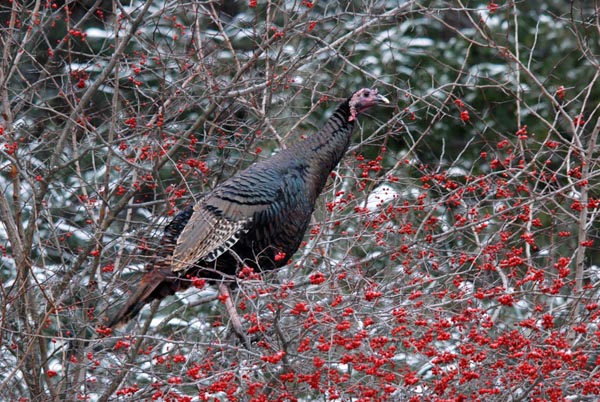Winter Forage for Wild Turkeys

Location: Hanover, NH
There’s something incongruous about a 20-pound bird sitting in a tree with branches barely fatter than twigs, but that’s exactly where I found this Eastern wild turkey (Meleagris gallopavo silvestris). She was obviously after the red berries that covered this young ash. A dozen of her friends strutted on the ground under her, jauntily pecking at the red raindrops that fell every time she moved. About 90% of a wild turkey’s diet is plant matter. During the winter, they often feed on the fruit that hangs on the longest, not only ash berries, but also barberry, rose hips and apples.
It’s so nice to see wild turkeys in such abundance again! When I was a kid, they were as rare as the Northern Lights on an overcast night. In fact, they had totally disappeared from New Hampshire about 150 years ago due to loss of habitat and unregulated hunting. Today, about 25,000 wild turkeys forage for berries, bugs and seeds in the Granite State, thanks to a relocation effort that began in the 1970s.
Turkeys can run up to 20 miles per hour and fly twice that speed, yet the one in this picture was happy to munch on berries as she watched me with a wary eye, at least for a short while. She soon hopped down to the ground then followed her friends under a fence and into the woods. It was remarkable how so many large birds could instantly disappear. Interestingly, by spring, this flock will likely disperse as the hens, toms (mature males) and jakes (young males) don’t mix during the mating season. One dominant tom gets all the girls.




So glad she posed for you, great picture and story.